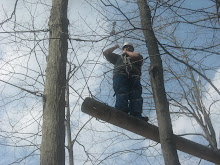
The problem with “Cry the Beloved Country” by Alan Paton is that it was written over 60 years ago. These are the words that were uttered to me as I explained what it is like being in an international service-learning program. These might not have been the exact words, it could have been a completely different book but Paton’s “Cry the Beloved Country” is the book that I had to read while in Beyond Borders. It is a very worthwhile read that garners the spirit of social protest through its depiction of apartheid in Johannesburg. But the distinct imagery of apartheid is not necessarily in the social conscious of those that live in Johannesburg today. It is with this thought and suggestion that I researched Kenyan authors and found a little gem in the University of Guelph Library, “A is for Ancestors: Selection of Works from the Caine Prize for African Writing.”
The Caine prize celebrates short stories by African writers published in English. Stories may also be translated into English. What unique is not only is their a $15 000 prize and travel grants for short listed candidates but there is also opportunities for winners and members of the short list to provide workshops in writing across Africa. I quickly searched through the Table of Contents to find writers from Kenya and came across, “The Testimony of Terremoto” by Yvonne Adhiambo-Owuor and “Drones” by Parseleo Kantai. Both pieces evoked imagery and awakened my imagination in different way to what Kenya is present day.
Adhiambo-Owuor’s “The Testimony of Terremoto” is about the trial of Colonel A. Smith, an alleged terrorist in Justice Ongengo’s court room. Both characters are presented as having varying levels of influence and power, Ongengo for being an educated person and Smith for having access to and supply of weapons of mass destruction. The trial garnered great press and the disappearance of both the witness Terremoto and Ongengo disband the trial and Smith is a free man. The writing gave a sample of an educated Kenya where success can happen and where people can and are influenced by terrorism. There is no picture of desolates or poverty; instead grander images of social protest in the form of WMD. It is a timely story in many ways because it reminds us of an ever changing continent. An African has since been named Secretary General of the United Nations and almost a quarter of the world’s exports now come from Africa. In so many ways, you can see growth but the image of a needy, poverty stricken place is still prevalent. I can’t wait to meet George, our site supervisor at Education for Life Kenya, the few emails that have been exchanged are the nicest emails I’ve ever received in my life. I’m bringing up George because I envision him to be someone who is well educated and is able to keep Education for Life going in Kenya much like Justice Ongengo who represented equality and justice.
In “Drones” by Parseleo Kantai, various images stirred within me including what some would call the most vivid image of street kids, “I spent morning talking and taking photographs of the street kids that live on its banks. It has acted as a form of insurance ever since, unlike most people, I have no fear of being attacked, robbed or raped by them.” In this same image the street children also have bags of garbage flung over their backs clinging to it because its their only possession. Some of you readers might be expecting me to now say I’m scared of these children and of this image but the image is more a humbling and accepting image. The photographer who is witness to these children accepts and sees these kids as just that- kids. He has moved beyond being afraid of them or dismissing them because they are “dirty” or “tainted” and has accepted them as children. All of my fellow travelers have been warned to watch out for children thieves because they are the ones you are least likely to expect. It is not that these children are bad, Joanne often describes but it is that they will always see you as having more than they do in any circumstance. I don’t want to describe these children as unwanted but it is the only word that comes to mind. I see these children as needing the most and street kids especially being cast off need the most support in any culture or society.
It was truly a pleasure to get the chance to sink my teeth into some Kenyan literature. There were two other stories from Kenyan writers including “A Turn in the West” by Andiah Kisia and “The IOU” by Stanley Gazemba. Gazemba has written a book that I desperately want to read because his short story was simply one of the best pieces of short fiction I have ever read. It was difficult at first to find literature not produced in North America but it was so worth it, not just because I am travelling to Kenya this summer but also because reading literature opens up a world of possibilities. I encourage you to open your mind to a book or story you never thought you would read.
For More information:
Elam, Nick (administrator) A is for Ancestors: Selection of Works from the Caine Prize for African Writing. Bellevue: Jacana Publishing, 2004.
http://www.eflkenya.org/


No comments:
Post a Comment